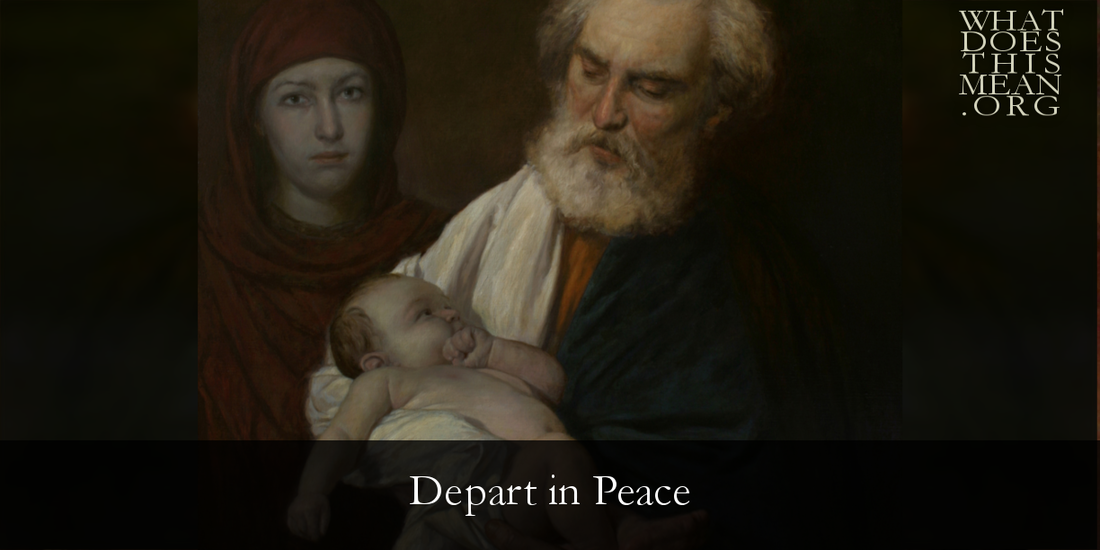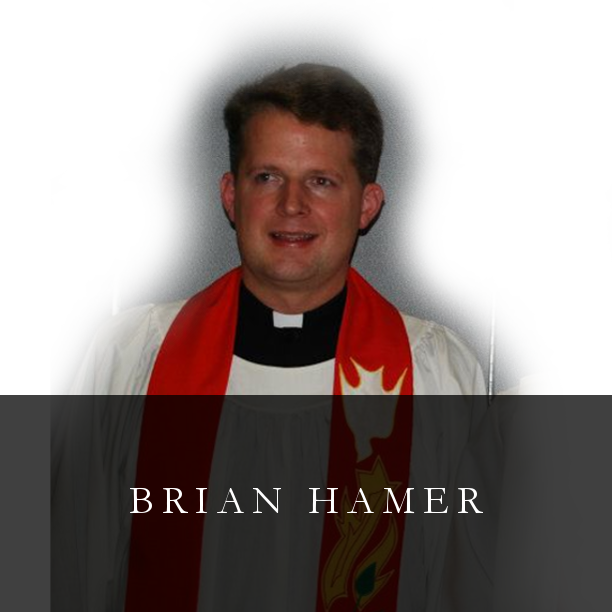The text of the Nunc Dimittis comes from the Gospel Lesson for Candlemas (February 2nd), St. Luke 2:29-32 [22-40], a day when the faithful traditionally held candles during the Gospel Lesson and part of the Communion liturgy. St. Luke describes Simeon as “righteous and devout man, waiting for the consolation of Israel.” Simeon’s faith and life were governed by the Spirit of God. So he waited every day for the Messiah to personally appear to him in the temple, just as the Holy Spirit had promised would happen before Simeon died. Think about what it would be like to know that you would not die until you saw the Lord’s Christ, but not knowing when that would be! Year after year, feast after feast, came and went for old Simeon, marking sacred time through the Old Testament “church year,” faithfully waiting for the Lord’s Christ to appear. Would today be the day?
Imagine Simeon’s reaction when, on the fortieth day after the birth of Jesus, the ancient seer saw the distant silhouette of a young Jewish couple and their newborn baby. As they drew closer, He knew by the Holy Spirit who was upon him that this was the day. He took the baby Jesus in his arms, lifted Him high in the air, and confessed his faith in the words of Nunc Dimittis, given here according to the text and versification in TLH (pp. 43-44):
1 Lord, now lettest Thou Thy servant depart in peace: According to Thy word;
2 For mine eyes have seen Thy Salvation:
which Thou hast prepared before the face of all people;
3 A Light to lighten the Gentiles: and the Glory of Thy people Israel.
4 Glory be to the Father, etc.
Most of the choral settings of this canticle come from Anglican composers, no doubt because of the lasting place of the Nunc Dimittis, which is paired with the Magnificat in the Anglican office of Evensong. This explains why the English composers have probably set the pace in both the quality and quantity of musical settings of the Nunc Dimittis. Consider, for instance, a lesser known Latin setting by Gustav Holst (1874-1934) for double choir, which was premiered 100 years ago (Easter Sunday 1915):
2 Quia viderunt oculi mei salutare tuum,
Quod parasti ante faciem omnium populorum,
3 Lumen ad revelationem gentium: et gloriam plebis tuae Israel.
4 Gloria Patri, etc.
The music begins in the lower register of the men’s voices and gradually adds apparently random notes until a chord appears, as if the pieces of the Old Testament portrait of Christ are gradually assembling in the arms of Simeon (v. 1). Brief solos for soprano and then for tenor, appropriate for Anna and Simeon, proclaim the good news that the eyes of the faithful have seen the salvation of the Lord. The full choir sings the glad tidings that this salvation is prepared for all people (omnium populorum, v. 2), followed by a gradual building to a cadence on the word Israel (v. 3) The Gloria Patri (v. 4) begins in unison at the octave, and gradually expands into a triumphant Amen, as if to usher all the faithful, through faith in this Child, to the final resurrection of the body and the life everlasting.
This is but one fine example of an Anglican setting of this canticle. So what is the unique Lutheran contribution to Simeon’s canticle? Perhaps the most salutary and profound use of this text is its relatively recent place (circa. 1917 among Lutheran hymnals in America) as a post-Communion canticle. One recently sainted pastor, Dr. Kenneth Korby, put it this way: “We go to the Sacrament as if going to our death so that we may go to our death as if going to the Sacrament.” Indeed, the quaint and poignant drama of Simeon is played out in real life worship in each Divine Service. We arise each Sunday, wondering if this will be the day that we will die and be with the Lord forever. He speaks His words over the bread and wine: “This is my body . . . this cup is the new testament in my blood.” The pastor holds the Chalice and Host high for all to see and proclaims, “The peace of the Lord be with you always.” We receive the Sacrament as heaven and earth overlap and interlock in our very bodies. The pastor dismisses us with Simeon’s words, “Depart in peace.” We then sing Simeon’s canticle, even when straining for our last words from our death bed, with a quiet confidence that we may now go to our death as if going to the Sacrament. For in either event, we are simply going to Christ, the light of the Gentiles and the glory of His people Israel.
Rev. Brian Hamer
Redeemer Lutheran Church
Bayside, NY



 RSS Feed
RSS Feed
